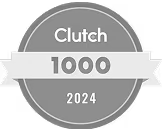
Content marketing already settled permanently in the dictionaries of the marketers around the world. But what it actually is and how to use it to achieve your company's goals?
What is content marketing?
Content marketing (CM) is considered to be one of the most effective marketing tools. Content Marketing Institute gives six definitions of CM. I will not go through them in this article (you can find them here). The essence of these definitions can be this explanation:
„content marketing is a strategic marketing approach focused on creating and distributing valuable, relevant, and consistent content to attract and retain a clearly-defined audience – and, ultimately, to drive profitable customer action.”
Basically, content has to be not only valuable, but it should also be relevant to company's communication strategy and gain customer insight. It means delivering adequate information with educational (by providing solution to a real problem) or entertainment value instead of pitching products/services. Non-invasiveness is what characterizes content marketing – this kind of marketing activity is not based on coaxing, but mainly, on providing reasonable arguments and emphasizing the benefits. Therefore it is not a surprise that CM is sometimes described as the art of communicating with customers.
What is the purpose of such activities? The basic goal of CM is to create relationship with your target group, what translates into the increasing amount of desired activities among customers. Content marketing, like any other marketing activity, has to influence clients and generate profits for the company.
What is not content marketing?
Don’t mistake CM for content itself, it should be based on strategy, and most of all, on consumers insight, therefore you can’t forget about KPI. In the conclusion, CM is a process, not a short-term actions.
Content marketing is definitely not:
- product advertising,
- advertising campaign that isn't covering the needs of users,
- product placement.
If you still have doubts what is and what isn't content marketing, I recommend checking out the website of Content Marketing Institute, which is filled with many practical advices submitted by experts.
More than just a blog
Content marketing seems to mean too many things to too many people and it is often boiled down to blogging and social media activities. It's a big mistake! CM works with different forms, channels of distribution and tools.
Content marketing distribution
If content is a king, then the distribution is his queen. It based on four main keystones:
- owned media – channels that brand controls and are unique to this brand, eg. blog or corporate website (it is the channel on which company should focus on, because it helps directing traffic on its platform),
- earned media – external channels that we have been able to acquire (earned media essentially is about online word of mouth, usually seen in the form of viral content, mentions, shares, etc.),
- paid media – brand pays to be displayed through channels such as display ads, sponsorships, advertorial, etc.
- shared media – happens when brands invites audience to create content of their own on social media channels (it may seem complicated because, after all, you are the only owner of your fanpage. Indeed you are, but unfortunately the vast majority of us does not own whole Facebook ;)).
In each of those four distribution channels all sorts of content can be published. Choosing the channel (we don't have to pick just one) affects both the form and the type of content. This is the reason why you should have good strategy before starting any work – do not shoot in the dark! Unfortunately, according to the researches of WhitePress only 23% of companies have a documented content marketing strategy and 50% of brands are working on non-documented strategy.
Forms and tools
In fact, the forms taken by CM can be limited only by our imagination. Below you can find the examples of the most popular content marketing forms:
- Expert articles and comments in the media (73%)
- Corporate blogs (66%)
- Social Media publications (65%)
- Newsletters (46%)
- Infographics (43%)
- Case studies (31%)
- Videos (29%)
- Presentations (26%)
- E-books and White Papers (24%)
- FAQ (20%)
- Webinars (8%)
As a comparison check out the graphic below that presents distribution channels indicated by marketers (in WhitePress report). It is worth noting that as many as 92% of them publishes content on the company's website or blog.

In contrast, all kinds of programs and applications that are supporting monitoring and optimization are used as tools of content marketing. At different stages of implementing the strategy you can use various of those - there is plenty of lists describing recommended tools on the Internet.
Content marketing is a big topic. If you feel that you want to know more, I also recommend to check out all sources mentioned above. Anyway, stay tuned, because I’m going to publish another article about content marketing next week. It’s going to answer the question “what are the benefits of content marketing?”.
The full article can be found in Marketing w Praktyce (Marketing in Practice; March 2016).
Navigate the changing IT landscape
Some highlighted content that we want to draw attention to to link to our other resources. It usually contains a link .
.svg)

.webp)


.svg)
.svg)
.avif)

.avif)
.avif)
.avif)
